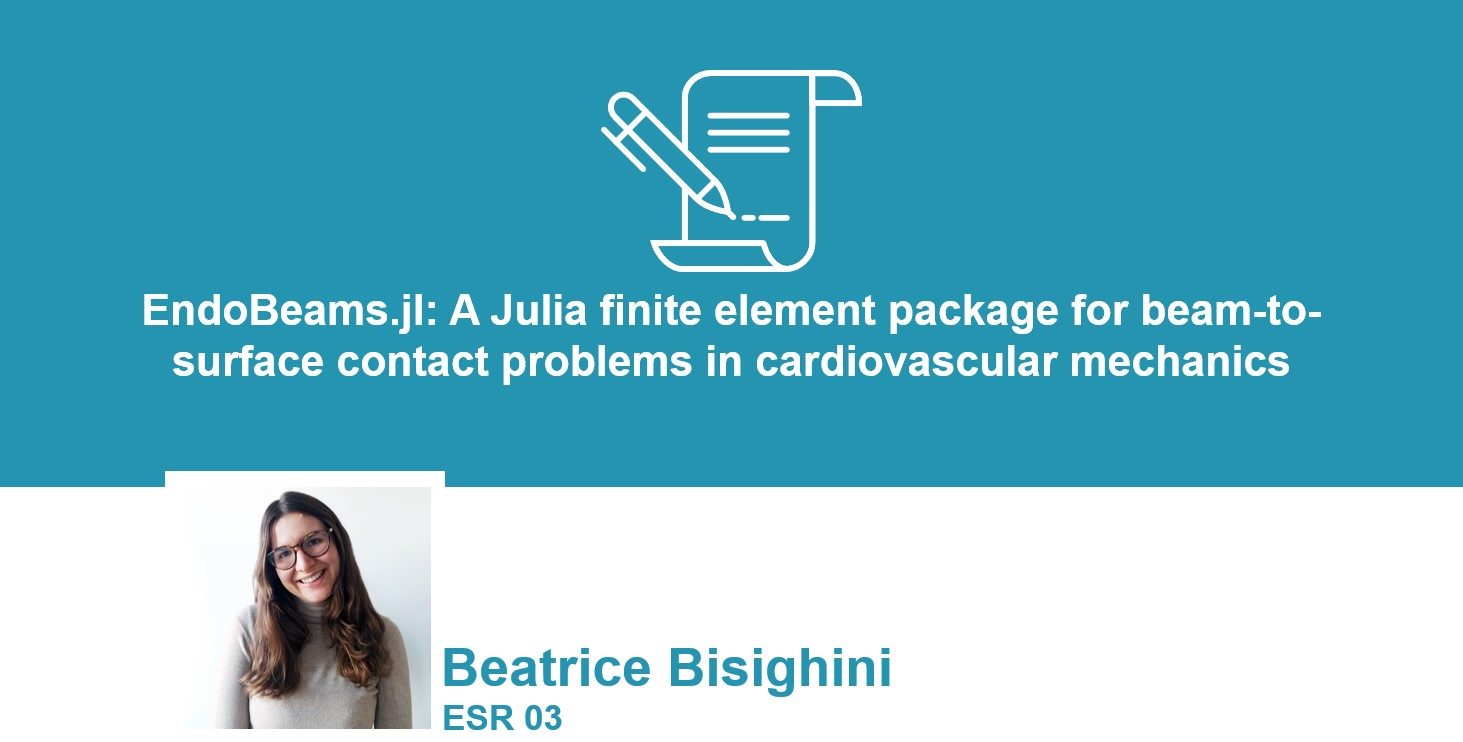Latest publication in MeDiTATe project. EndoBeams.jl: A Julia finite element package for beam-to-surface contact problems in cardiovascular mechanics

Beatrice Bisighini, ESR 03 in the MeDiTATe project, published the paper titled EndoBeams.jl: A Julia finite element package for beam-to-surface contact problems in cardiovascular mechanics on Advances in Engineering Software journal.
The work was developed in collaboration with Miquel Aguirre, Baptiste Pierrat and Stéphane Avril from Mines Saint-Étienne and David Perrin from PrediSurge.
The paper, whose abstract is reported in the following lines, is available at this link.
The increasing use of mini-invasive and endovascular surgical techniques is at the origin of the pressing need for
computational models to support planning and training. Several implantable devices have a wire-like structure,
which can be modelled using beam elements. Our objective is to create an efficient Finite Element (FE) modelling
framework for such devices. For that, we developed the EndoBeams.jl package, written exclusively in Julia, for
the numerical simulation of contact interactions between wire-like structures and rigid surfaces. The package is
based on a 3D FE corotational formulation for frictional contact dynamics of beams. The rigid target surface is
described implicitly using a signed distance field, predefined in a volumetric grid. Since the main objective
behind this package is to find the best compromise between computational speed and code readability, the al-
gorithm, originally in Matlab, was translated and optimised in Julia, a programming language designed to
combine the performance of low-level languages with the productivity of high-level ones. To evaluate the
robustness, a set of tests were conducted to compare the simulation results and computational time of Endo-
Beams.jl against literature data, the original Matlab code and the commercial software Abaqus. The tests proved
the accuracy of the underlying beam-to-surface formulation and showed the drastic performance improvement of
the Julia code with respect to the original one. EndoBeams.jl is also slightly faster than Abaqus. Finally, as a proof
of concept in cardiovascular medicine, a further example is shown where the deployment of a braided stent is
simulated within an idealised artery.
